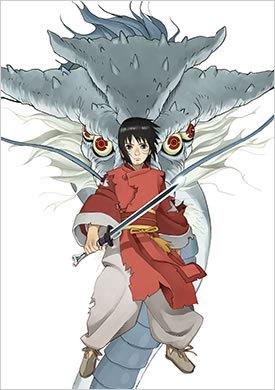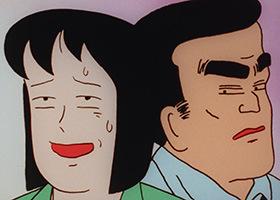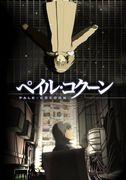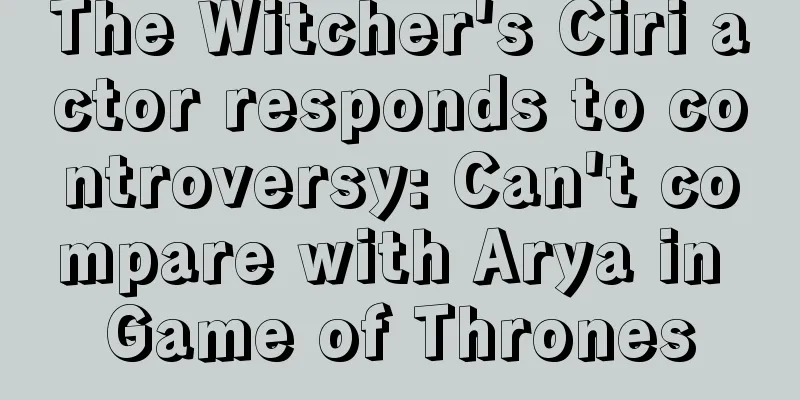The appeal and reviews of Onigamiden ■ Public Media theater ■ Original Media novel ■ Release date April 29, 2011 - January 1, 0000 ■Distribution company Distributor: Sony Pictures Entertainment ■ Eirin Number 118904 ■Frequencies 98 min ■ Number of Episodes Episode 1 ■Original Story・Original work by Takada Takashi ■ Director・Director: Hiroshi Kawasaki ・Director: Junyasu Furukawa ■ Production Animation Production: Studio Pierrot Production: "Kigamiden" Production Committee (SPEJ, Pierrot, TV Tokyo, SMEJ) ■ Story Junior high school student Tendo Jun (voice: Ono Kensho) lost his father seven years ago and lives with his mother in Kyoto. One day, on his way home from school, he is chased by a mysterious monster that suddenly appears. Jun gets lost in an old temple and is saved by a monk named Genun (Nakamura Shido). However, Jun is taken to the Heian capital, transcending time and space. In the Heian world, Jun hears from a nobleman that those called "Oni" are manipulating nature with various sorcery and threatening the peace of the capital. In order to put an end to the battle, they need a legendary chosen child to savior who can awaken the sealed Orochi, and they tell him that it is Jun. As the nobles beg for help from the confused Jun, one person has doubts about his identity. It is Raiko, a young warlord whose parents were killed by the "Oni". Jun is forced to make a decision when Mizuha (Ishihara Satomi), a girl from the "Oni" clan, appears before him. Mizuha tells Jun that the "demons" are humans who wish to coexist with nature, and are not evil. Jun is still unable to come to an answer as to what is right and what he should protect, and the day of the decisive battle approaches. ■Explanation A modern-day middle school student is transported across time and space to the Heian capital, where he becomes a savior and becomes embroiled in a conflict between humans and demons. This is a fantasy action film based on the novel of the same name by Takada Takashi. The production is by Studio Pierrot! The director is Hiroshi Kawasaki of "Spriggan"! The concept design of "Orochi", the key to the story, is by Katsuhiro Otomo of "AKIRA"! The character design is by Tetsuya Nishio of "NARUTO"! When I saw the poster, my expectations were raised considerably even before I saw the film, and when I saw the staff, I thought there was no way it could not be interesting. As expected, it was interesting... It was a work that left me feeling very refreshed after watching it. I think it's a story that will be irresistible for those who love Kyoto and history. The story is roughly based on the story of "The Demon Slaying of Oeyama." If you haven't seen it yet, you may enjoy it more if you know about the story. So, on this site we provide explanations about the films "Onigiminden" and "The Demon Slaying of Mt. Oe" so that people who haven't seen it yet can enjoy it more, people who have seen the film will want to watch it again, and people who have read the original work will think "Maybe I should try watching the anime too..." A fantasy anime about the adventures of a modern boy who is caught up in a conflict between humans and demons 1200 years in the future. The anime is based on the novel of the same name by Takada Takashi. It is produced by Studio Pierrot, which has made the "NARUTO" series a global hit, and director Kawasaki Hiroshi, who is renowned for his fast-paced action films. Otomo Katsuhiro is in charge of the concept design for Orochi, a mythical beast that plays an important role in the film. The participation of voice actors Satomi Ishihara from "Manzai Gang" and Shido Nakamura from "Nichirin no Isan" became a hot topic. You may think, "Oh, celebrity voice actors...?", but (leaving aside Satomi Ishihara) Shido Nakamura is amazing! In fact, he may be better than the average voice actor out there... Following the original story, it was produced as a feature-length animated film that combines historical fantasy and adventure, and was released nationwide except for the Tohoku region on April 29, 2011. It is the first animated film produced by SPEJ since transferring its business to Aniplex. Director Hiroshi Kawasaki is a freelance animator, and this is his third directorial work after "Spriggan" and "Naruto the Movie: The Great Clash! The Phantom Underground Ruins". Katsuhiro Otomo is also involved in the concept design of Orochi in this film, and Kawasaki has experience as an animator for "AKIRA" and as a character designer and director for "MEMORIES: The Stinkiest Weapon" and "Spriggan", so he has a connection with Otomo's work. Since the original author had almost no say in the production and left it up to the staff, there are many differences in the story and character settings from the original due to the staff's adaptation, and the story revolves around Jun's struggle with deciding between right and wrong, making a courageous decision, and growing as a person. According to TV Tokyo's "Kishinden Special Feature," it has been in the works for 7 years, and according to a feature article in the Spring 2011 issue of Katsuji Club, the series has been in the works since the publication of the original in 2004. It was originally scheduled to be released on October 9, 2010, but in September of the same year, SPE announced that the release would be postponed to spring 2011, leading to a Golden Week release in 2011. After the Great East Japan Earthquake, the official website for this film began displaying the original homepage and menu after an image of concept art with the message "Ganbarou Nippon" written in calligraphy. The main cast was decided at the director's discretion. The lead actor, Kensho Ono, did not appear at all on the opening day stage greetings or promotions. The film debuted in 12th place in the film attendance rankings (Kogyo Tsushinsha), outside the top 10, pushed aside by major films. In the Tohoku region, Forum Cinema was the theater that screened the film, but it was released in Aomori and Hachinohe for one week from July 2, 2011, after which it was released. It was also the final new release (and the final screening in the Kanto region) at Ikebukuro Theater Diamond, which closed on May 27, 2010. The official website is poorly updated, and it still lists the film as being in theaters and receiving rave reviews. Unusually for a theatrically released film, the soundtrack has yet to be released. ■Cast Jun Tendo / Kensho Ono / Mizuha / Satomi Ishihara / Genun / Shido Nakamura (special appearance)
・Minamoto no Yorimitsu/Kondo Takashi・Watanabe Tsuna/Morikubo Shoutarou・Kinta/Ito Kentaro・Usui Sadamitsu/Kase Yasuyuki・Urabe Suetake/Komori Sosuke・Tree God/Sakino Shunsuke・Fire God/Tojo Kanako・Amanojaku/Aigase Ryuji・Tajihimaro/Nojima Akio・Sea God/Tsukada Masaaki・Mountain God/Miyake Kenta・Earth God/Osaka Chikara・Leader/Nishikawa Ikuo・Commander/Hokame Katsuhisa, military officer/Katsu Anri, Tokumoto Yasutoshi, Masukawa Yoichi, Takahashi Hidenori, Kikumoto Taira, Iwasaki Ryo, Tendo Misaki/Yasuga Mayuno, Tendo Isao (childhood)/Tamura Mutsumi, bully/Nara Toru, mother of an elementary school student/Adachi Mari, elementary school student/Makiguchi Masayuki, high school girl/Tomoe Keii, Morimoto Nozomi, Yamada Mio, town resident/Takada Takashi, Tsujimura Mizuki, Nakamura Takako ■ Main staff・Original work: "Kiginden" by Takashi Takada (published by Kodansha)
・Director: Hiroshi Kawasaki ・Screenplay: Toshihisa Arakawa, Hiroshi Kawasaki ・Storyboard: Hiroshi Kawasaki, Mamoru Sasaki, Shuichi Obara ・Character design: Tetsuya Nishio ・Orochi concept design: Katsuhiro Otomo ・Direction: Yoshiyasu Furukawa ・Music: Ryudo Uzaki ・Performance: Tsuzuki☆Ryudo Gumi ・Drums: Eitetsu Hayashi ・Theme song: Miho Fukuhara "STARLIGHT"
Production company: Studio Pierrot ("Kigamiden" Production Committee)
Distribution: Sony Pictures Entertainment (Japan) ■ Main Characters・Jun Tendo
A 15-year-old junior high school student. He originally lived in the center of Kyoto City, but now lives in a single-parent household after his father died in an accident seven years ago. He is timid in all ways. He was weak-willed and lacked confidence, and was unable to even warn a child who ran out. As a reaction to this, he would buy snacks on the way home from school to relieve stress. However, he is kind-hearted and will give sandwiches to a weak being like a puppy. The reason he does not express his will is because of his father's death (which Jun thought was a wasted death), and the loss of paternity due to his father's death is depicted in the beginning. He is childish in his inability to make decisions and continues to hesitate, but unlike the selfish Genun who ignores the other person's wishes, he has an adult side that tries to find answers through conversation with people. Throughout the story, the characters are depicted fighting for their lives, and Jun, who is shown this clearly, also comes to the conclusion and fights for his own life. Regarding his lineage, Genunun rephrases him as "a descendant of legitimate nobility," while the sea god calls him "a descendant of the magatama." He never lets his camera phone go unattached, and takes landscape photos, explaining them to Raiko as "selfies." At the end of the story, in the present day, he is shown looking at a photo of himself, Raiko, Mizuha, and the three of them together. His original source is the leader of the demons who appears in the classics. There are parts that suggest he is Shuten-doji.
・Granddaughter of Mizuha Sea God. She hates humans very much, but she is trying to fight, but she is not fighting because she wants to. She uses water magic. In a flashback scene, she is shown blushing as she and Raikou are in love with each other. In the director's cut version, it is revealed that she has no breasts at all.
・An esoteric Buddhist monk who leads the demon extermination on the side of the Genkumo nobles. Wishing for a "peaceful paradise," as the battle between the demons intensifies, he summons Jun to the Heian period and revives Orochi. His true intention is to obtain the waters of Lake Biwa and Orochi and conquer the world, killing anyone who goes against his will. However, he also has a sense of justice, and is not portrayed as a villain. Jun accepts his will and fights as someone with a similar will. He eventually fights against the demons, but is defeated by the attacks and defenses of Jun and Susanoo. He uses magic like the demons, but the source of his power is never revealed.
・A young boy of the same age as Minamoto no Yorimitsuzumi and Mizuha, he is a swordsman who guards Heian-kyo. Born to an aristocratic father and a demon mother, he was killed in a battle conspired by Genkumo when his parents tried to call a truce between the aristocrats and demons. He spent his childhood with the sea god and Mizuha, but left his demon life when he was about 10 years old and served under Genkumo without knowing the truth, and at the end of the story he summons Taishakuten by divine command and has him possess himself. The basic character design is a re-use of Temujin who appears in the movie Naruto: The Movie: Great Clash! The Phantom Underground Ruins.
・Isao Tendo
He is Jun's father who appears in the movie version and was a high school teacher. Seven years ago, he jumped in to save a girl who had jumped in front of a railroad crossing (presumably a suicide attempt), but was hit by a train and died at the age of 38. Jun hated his father for sacrificing himself for others, and avoided looking at his father's portrait. Later, in a dream in the Heian period, when Jun loses consciousness, he sees Isao, a fifth-grader, dueling with a bully despite being weak, to protect his friend who was being bullied, and he understands the truth behind his untimely death. It is never revealed whether he was a member of the Magatama Clan.
・Misaki Tendo
Jun's mother who appears in the movie version. She tells Jun when he was a child, "Become a brave man like your father." She speaks in Kyoto dialect.
・Minamoto no Yorimitsu (Minamoto no Raiko) / Minamoto no Yorimitsu (Minamoto no Yorimitsu)
A warrior who guards Heian-kyo. The eldest son of Minamoto no Mitsunaka. He summons Taishakuten by divine command and has him possess himself.
・Minamoto no Yorimitsu
Minamoto no Yorimitsu was a military commander in the mid-Heian period. His father was Minamoto no Mitsunaka, the Shogun of the Chinjufu, and his mother was Minamoto no Toshidome, the daughter of Omi no Kami of the Saga Genji clan. His given name is often pronounced "Raikou." He was Mitsunaka's eldest son and the third head of the Seiwa Genji clan. He inherited the land of Tada in Settsu Province (Tada, Kawanishi City, Hyogo Prefecture), where Mitsunaka first formed a samurai group, and his descendants are known as the "Settsu Genji." His half-brothers were Minamoto no Yorichika of the Yamato Genji clan and Minamoto no Yorinobu of the Kawachi Genji clan, which later became the mainstream of the samurai Genji clan.
Watanabe Tsuna Watanabe Tsuna (水野辺のツナ) was a military commander in the mid-Heian period. He was the son of Minamoto no Tsuna. He was a descendant of Minamoto no Toru of the Saga-Genji clan, and his official name was Minamoto no Tsuna (水野辺のツナ). He was commonly known as Watanabe Genji. He is known as the leader of the four heavenly kings of Yorimitsu. He was born in Minamoto no Tsuna, Adachi County, Musashi Province (present-day Konosu City, Saitama Prefecture) as the son of Minamoto no Tsuna of the Saga-Genji clan, who was a resident of Musashi Province and a Musashi Gonnosuke. He was adopted by Minamoto no Atsushi of the Ninmyo-Genji clan, who was the son-in-law of Minamoto no Mitsunaka of the Settsu-Genji clan, and lived in Watanabe, Nishinari County, Settsu Province (present-day Chuo Ward, Osaka City, Osaka Prefecture), his mother's hometown. He called himself Watanabe no Tsuna, or Watanabe no Genji Tsuna, or Genji Tsuna, and became the ancestor of the Watanabe clan. He served Minamoto no Yorimitsu of the Settsu Genji clan, and was known for his bravery as the leader of Yorimitsu's four heavenly kings. He is famous for the anecdote of defeating Shuten-doji at Mt. Oe, and for cutting off the arm of a demon with the famous Genji sword "Higekiri no Tachi" on the Ichijo-modoribashi bridge in Kyoto. The Noh play "Rashomon" relocates the setting of the Ichijo-modoribashi tale to Rashomon. His descendants were called the Watanabe Party, and served as Takiguchi warriors engaged in guarding the Imperial Palace, and as a samurai group of Settsu Province, they controlled the navy of the Seto Inland Sea with their base in the Sea of Sumiyoshi (Suminoe) (Osaka Bay), and were active from the Genpei War to the Northern and Southern Courts. Matsuura Hisashi, the founder of the Kyushu navy Matsuura Party, was also of the Watanabe clan. His ancestor, Minamoto no Toru, was said to be the real-life model for Hikaru Genji, the protagonist of The Tale of Genji, and Tsuna was also famous for his handsomeness. Additionally, in the Umeda area of Kita-ku, Osaka City, there is Taiyuji Temple, which is associated with Minamoto no Toru, and the chief priests of the nearby Tsuyu-ten Shrine (Otsu Tenjin Shrine, famous for the Shinju at Sonezaki) and Zama Shrine, which is said to be the shrine where the Watanabe surname originated, are descendants of Watanabe Tsuna.
・Sakata Kintoki Kintaro (Kintaro) is the childhood name of Sakata Kintoki (also known as Kintoki). It is also the title of a folk tale or children's story with Kintaro as the main character. There are many legends about Kintaro, but according to one inscribed at Kintoki Shrine in Oyama Town, Sunto District, Shizuoka Prefecture (the shrine where Kintaro is enshrined), he was born in May of the 10th year of Tenryaku (956). It is said that when Yaegiri, the daughter of the sculptor Jubei, went to Kyoto, she married Sakata Kurando, who served at the Imperial Court, and became pregnant. Yaegiri returned to her hometown and gave birth to Kintaro, but when Sakata died, she decided not to return to Kyoto and instead raise him in her hometown. As he grew up, Kintaro wrestled with a bear on Mt. Ashigara and grew up to be a lively and kind child who was devoted to his mother. On March 21, 976 (April 28, 976), he met Minamoto no Yorimitsu as he was passing through Ashigara Pass, and was recognized for his abilities and became his retainer. He changed his name to Sakata Kintoki, went to Kyoto, and became one of Yorimitsu's four heavenly kings. Others included Watanabe no Tsuna, Urabe no Suetake, and Usui no Sadamitsu. On March 26, 990 (April 28, 990), he defeated Shuten-doji, who lived in Oeyama in Tanba Province (present-day Fukuchiyama City, Kyoto Prefecture). Shuten-doji would visit the capital and commit evil deeds, so Minamoto no Yorimitsu and the four heavenly kings disguised themselves as mountain ascetics and used Shinhenkitokuzake (sake with a sleeping pill) to defeat him. On December 15, 1012 (January 11, 1012), Sakata Kintoki was on his way to Tsukushi (now Kitakyushu) to subjugate bandits in Kyushu when he fell ill with a serious fever and died in Katsutasou, Mimasaka, Sakushu (now Katsuo-cho, Okayama Prefecture). He was said to have been 55 years old. The people of Katsuta admired Kintoki and built Kurigara Shrine (meaning bravery) and buried him there. The shrine is now called Kurigara Shrine. The above is the legend of Kintaro recorded at Kintoki Shrine. However, in fact, his existence is also doubted. In the first place, the name Kintaro could not have been a childhood name, but rather it shows the characteristics of a common name at the time of adulthood (for example, Minamoto no Yoshiie was called Hachiman Taro). However, according to historical materials from that time, such as Fujiwara no Michinaga's diary "Mido Kanpakuki," it is certain that Shimotsuke no Kintoki, an excellent imperial guard (attendant), served Michinaga. It seems that this Kintoki was dramatized, and in the Konjaku Monogatarishu, which was compiled about 100 years after the time of Raiko and Michinaga, a retainer named Kintoki appears as a retainer of Raiko. The current Kintaro legend was completed during the Edo period, and the image of a strong boy who was one of Raiko's four heavenly kings was established through joruri and kabuki. He was the model for May dolls as a lively boy wearing a diamond-shaped belly wrap, carrying an axe and riding on the back of a bear. Because of this appearance, the diamond-shaped belly wraps that were once worn by infants all over Japan were also called "Kintaro". There are legends about his birth, such as that his mother was a mountain witch who was pregnant with the child of the god of thunder, and that he was given to Yaegiri by a red dragon at the top of Mount Kintoki. He is also the origin of the name "Kintoki mame" (red kidney beans), and his son, Sakata Kinpei, is known as the origin of the name "kinpira gobo" (burdock root). Minamiashigara City, next to Oyama Town, also has many legends about Kintaro, but the contents differ greatly from those of Oyama Town. There are also legends in other places, such as the grave at Manganji Temple in Kawanishi City, Hyogo Prefecture, and Nagahama City, Shiga Prefecture. Kintoki Shrine in Oyama Town, Sunto District, Shizuoka Prefecture, is home to the Chorori Nanataki waterfalls and Dairokutensha Shrine, which are the setting for the legend of Kintaro. It is said that the water from Chorori Nanataki was used as Kintaro's first bath when he was born, and it is located behind his residence, the Kintoki mansion (present-day Kintoki Shrine). As Kintaro grew strong and became a fine military commander, it is said that people in the area bathed their children in the water from this waterfall. However, Minamiashigara City also has a place called Yuhinotaki waterfall, and there is also a legend that Kintaro was born in the mansion of a rich man, and that the water from this waterfall was used as his first bath. Kintaro and his son had deep faith in Dairokuten Shrine, and it is said that Kintaro, following in the footsteps of his mother Yaegiri, who would offer red rice and fish, would catch killifish, place them alive in a container and offer them in front of the shrine. Nagahama City and Maibara City in Shiga Prefecture were once Sakata County, and it is said that Sakata Kintoki was a native of Sakata County. Even today, there are several Ashigara Shrines and Ashigara Shrines in Nagahama City, and children's sumo is still held here. This area was the home of the ancient powerful Okinaga clan, and Kintoki is said to have been a member of that clan. The character for "king" is a pictograph of a sickle, and the figure wearing a belly coat symbolizes blacksmithing, suggesting that Kintoki was an early adopter of iron culture.
Urabe no SuetakeUrabe no Suetake (950? - 1022?) was a military commander in the mid-Heian period. His official name was Taira no Suetake. He served Minamoto no Yorimitsu and is considered one of Yorimitsu's four heavenly kings, with Watanabe no Tsuna at the head. He is famous for his role in the defeat of Shuten-doji in the Noh play "Oeyama," and for appearing in the Kagura plays "Tsuchigumo," "Komochi Yamauba," and "Takiyashahime." Volume 27-43 of the "Konjaku Monogatarishu" contains the story "Yorimitsu's servant Taira no Suetake met a 'Ubi' woman." On a dark night, Taira no Suetake was crossing a river on horseback when he came across a 'Ubi' woman halfway across the river, who said, "Hold this," and handed him her a baby. Suetake took the baby and headed for the shore. The 'Ubi' woman chased after him, saying, "Give me back my baby," but Suetake ignored her and went ashore. When they returned to the mansion, the baby had turned into a leaf.
・Usui Sadamitsu Usui Sadamitsu was a military commander in the mid-Heian period. He is said to have either the Taira or Tachibana surname. There are two theories about his birth: near Usui Pass and in Sagami Province. He served Minamoto no Yorimitsu and is known as one of the four heavenly kings, the first being Watanabe no Tsuna. He is famous for defeating Shuten-doji at Mt. Oe. His name is recorded in the "Tales of Times Now Past" as one of Minamoto no Yorimitsu's three retainers (note that the name of Watanabe no Tsuna, the first of the four heavenly kings, does not appear in the "Tales of Times Now Past"). In the children's story "Kintaro," he is given the role of finding Kintaro at Mt. Ashigara while traveling in search of strong people, disguised as a woodcutter, and taking him to Minamoto no Yorimitsu. Recent research suggests that Taira no Tadamichi was the son of Sadamichi (Sadamichi), who is said to have become the ancestor of the Miura clan.
・Sea God (Wadatsumi)
The god of the sea. Lord of the Dragon Palace. In the original Kami no Maki, it is revealed that he lost his life in a battle with an aristocrat, but when Jun returns to the real world, he visits Mizunoha Shrine, where a priest with an identical appearance appears.
・Mizuha
A demon girl who was injured while Jun and his friends were on their way to Mount Kurama to exterminate demons. She is the granddaughter of the sea god. She dies in the final battle of the original Kami no Maki, but a girl who looks just like her appears in the present world in the Tatsu no Maki.
・Contrary Sea Spirit
A subordinate of the sea god. A little demon. In the movie version, he goes to the present world to kidnap Jun at the beginning, but fails when Jun enters Genun's barrier.
・Subordinates of Ukame, the crocodile, the white snake, and the Kappa sea god.
・Mountain God
The mountain god. He is so tall that his head almost touches the high ceiling.
・Kagutsuchi (fire god)
The goddess of fire. A woman wearing a bright red kimono.
・Wildfire
Daughter of the fire god.
・Fire-breathing man, God of destruction
A companion of the fire god.
・Earth God (Haniyama)
The god of earth. A man like a pitch black rock.
・Kukunochi (tree god)
The god of trees. A slim man wearing a green kimono.
・Kodama (wooden spirit), Kitsune (fox), Kumanu (bear slave)
A companion of the tree god.
・A little demon who is a companion of the Monmou Tree God.
・Dada Hoshi (Monk), Adult (Ushi)
Bigger than a mountain god.
・Ono no Takamura
A former nobleman. Enraged by the injustice of humans, he became the master of the demon world.
・Gozu (ox head)・Mezu (horse head)
Takamura's subordinate.
・ Karasu Tengu
God of Mount Kurama.
・Umijaki/A subordinate of the sea god Amanojaku. A small demon. In the movie version, he goes to the present world to kidnap Jun at the beginning, but fails when Jun enters Genun's barrier. ■ Theme songs and music・Theme song: STARLIGHT
・Singer: Miho Fukuhara The appeal and reviews of Onigamiden "Onigamiden" is an animated film released in 2011, based on the novel of the same name by Takashi Takada. The film tells the story of a modern-day middle school student, Jun Tendo, who is transported through time and space to the Heian period, and grows as he becomes embroiled in the conflict between demons and humans. Below, we will take a closer look at the appeal and reviews of this film. The appeal of the story The story of "Kishinden" depicts an adventure that transcends time and space between the present and the Heian period. The protagonist, Jun Tendo, is grieving the loss of his father, but he faces new challenges in the world of the Heian period. The story deeply touches the audience as he struggles to overcome the conflict between demons and humans, and fulfill his role as the chosen savior to awaken the legendary being known as Orochi. Furthermore, through his interactions with Mizuha, a demon girl who appears before Jun, and his conversations with Minamoto no Yorimitsu, Jun searches for what is right and what he should protect, making this a fascinating coming-of-age story. Jun's inner conflict and growth are carefully depicted, allowing the audience to empathize with his journey and enjoy the story. Character Appeal Each character in "Kigishiden" has their own unique and attractive background. The main character, Jun Tendo, is timid and lacks confidence, but he has a kind heart and grows a lot throughout the story. His growth will give the audience courage and hope. Mizuha appears as a demon girl who harbors a strong hatred for humans, but opens up through her encounter with Jun. Her character symbolizes the delicate relationship between demons and humans, adding depth to the story. Genun appears as an esoteric Buddhist monk who leads the demon slaying and plays an important role in summoning Jun to the Heian period. His true feelings and actions have a major impact on the development of the story, and are elements that draw the audience in. Although Minamoto no Yorimitsu is a boy of the same age as Jun and Mizuha, he becomes embroiled in the battle between demons and humans and begins to have doubts about Jun's true identity. His character helps Jun grow while also heightening the tension of the story. Visual and musical appeal The visuals of "Kishiden" are a testament to Studio Pierrot's technical prowess. The Heian period landscapes and demon designs are beautifully rendered, drawing the audience into the world of the story. Additionally, Katsuhiro Otomo's concept design for Orochi emphasizes the fantasy elements of the film and creates a strong visual impact. In terms of music, Ryudo Uzaki's music and Miho Fukuhara's theme song "STARLIGHT" add to the atmosphere of the film. The theme song in particular has a beautiful melody that symbolizes Jun's journey of the heart, and resonates deeply with the audience. Ratings and Recommendations "Ghost Legend" has been highly praised for its story, characters, visuals, and music. In particular, the story, which combines historical fantasy and adventure, gives audiences a fresh and moving experience. In addition, Jun's coming-of-age story resonates with a wide range of generations, not just teenagers. This work will be especially enjoyable for those who are interested in Kyoto and history. The story based on "The Demon Slaying of Mt. Oe" will provide a new perspective for history buffs, doubling their enjoyment. It is also highly recommended for those who have read the original novel, as they will enjoy the new interpretation and character development of the anime version. In addition, "Kishinden" is recommended for fantasy anime fans as a story of adventure and growth that transcends time and space. Through Jun's journey, this work offers an opportunity to reexamine one's own values and beliefs, and is sure to inspire and inspire many audience members. Above, we have explained in detail the appeal and evaluation of "Onigamiden". This is an excellent animated film in terms of story, characters, visuals, and music, and is a work that can be recommended to many audiences. Please experience the excitement at the theater. |










